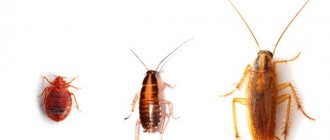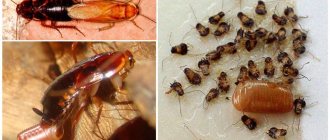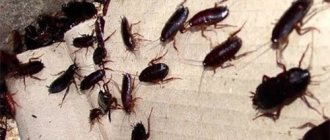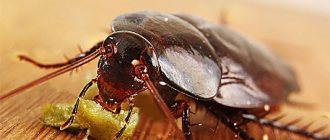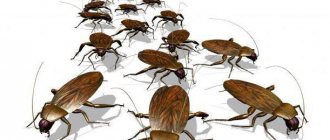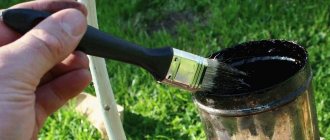Who eats cockroaches is interesting to those who would like to defeat them with the help of natural enemies and pets. Do you know where cockroaches hide? Then read about how they are found by their natural exterminators and destroyed en masse.
Natural enemies of cockroaches are mammals, amphibians, wasps and other reptiles. For example, hedgehogs will eat cockroaches. Among those who like to eat cockroaches are geckos, skinks and other species of lizards, frogs, turtles, some species of birds and even rats and mice. Lizards, which are reptiles, are even known to hunt cockroaches when they encounter them and are eager for a snack.
What kind of animals eat cockroaches?
Insects, including cockroaches, make up the majority of the lizard's diet. Some species, such as the bearded dragon, an Australian reptile, and the globally common leopard gecko, are natural predators of cockroaches. The leopard gecko is a nocturnal lizard, which makes it an even greater threat to cockroaches. Black-throated lizards (also known as black-throated monitors) also love cockroaches, especially those that grow to 10 centimeters or more in length.
Families who keep lizards such as geckos and iguanas as pets know that cockroaches are an inexpensive, convenient and nutritious addition to their pet's diet. However, it is best if the pet owner understands that the lizard should be fed cockroaches that are equal in size to the length between the lizard's eyes. Small cockroaches that can sometimes be found in your home make easy targets for your pet.
While it's nice to know that your pet lizard can take care of cockroaches that might get into its cage, it's very unlikely that you'll allow this type of pet to roam around the house and take the brunt of your cockroach control efforts.
Enemies among insects
At home, representatives of the spider kingdom willingly feed on Prussians. The spider weaves a web in the corner and patiently waits for prey. A whiskered insect entangled in a net is quite suitable for feeding. The spider injects poison and acid into the victim, due to which all the insides of the victim are digested in advance, and it draws out the contents of the body of the unfortunate insect. Loves marbled cockroaches and tarantula spiders. This is a large tarantula that some hobbyists keep as a pet. The tarantula does not weave webs; it lies in wait for its prey from ambush.
In nature, the main enemy of the cockroach family is emerald wasps. The wasp eats only an immobilized insect, having previously injected poison into it. The body of the longhorned beetle is used to lay larvae inside. The wasp paralyzes the victim, drags it into its burrow and lays larvae inside. She closes the entrance to the “house” so that the barbel does not get out. The larvae form for about a week, eating the body from the inside, then pupate and after a few more days emerge into the light.
The ants do not disdain the dead Prussian, dragging the carcass into the anthill to be devoured by the larvae. Young mantises also feed on cockroaches. They turn their heads 180 degrees in search of prey. When the victim is targeted, the praying mantis waits for it, hiding in ambush. Due to the speed of movement of the praying mantis, the cockroach has no chance to escape. Crickets do not disdain barbels either.
refers to carnivorous predators that eat all pests in a row: flies, ants, cockroaches, fleas, bedbugs. This is an arthropod that can handle even small lizards and frogs. When attacking, she is helped by her jaws, into which the ducts of the poisonous glands emerge. It paralyzes the victim and then slowly eats it.
Over the millennia of its existence, barbels have “made” many enemies. They have found their place in the food chain and serve as a source of food for many organisms. But at home, not everyone decides to get a lizard or a rat so that it eats the Prussians. It is more convenient for humans to use chemical, more effective methods of combating the parasite.
What predators love cockroaches?
The list of common natural predators of cockroaches is huge and humans can count themselves in to be number one on the list. Yes, man is the main predator of them.
Also, check out the top ones listed below:
- Small mammals
- Geckos
- Big spiders
- Salamanders
- Toads
- frogs
- Turtles
- Lizards
Snakes are also very good predators of cockroaches.
Do toads eat cockroaches?
These creatures are by far the most common enemies. Amphibians regularly ingest numerous cockroaches in one sitting!
While frogs and toads are certainly similar, they are actually two different species. Their similarities stem from the fact that toads and frogs belong to the same largest order of tailless amphibians, numbering over 7,000 living and 84 fossil species.
Their main differences are that toads have more stable legs and thicker, bumpier skin. Meanwhile, frogs have long legs and smooth skin covered with a layer of mucus.
Toads live in almost any environment of the country and are grayish-brown or gray in color, but there are also red ones with even darker spots the color of old bricks.
Toads eat cockroaches like popcorn and can be found in most home yards. They like to live in places where they have a source of water and shady cover. By creating a garden area that has a small pool of water and a raised rock for shade, you will attract large numbers of toads and have a natural and effective way to get rid of pesky cockroaches and other annoying insects!
Do frogs eat cockroaches?
A variety of frogs are even more common than toads. These creatures live near ponds, lakes and other soft, moist environments. Their characteristic green color with black spots helps them blend in with their freshwater aquatic environment. They measure 8-12 centimeters and eat cockroaches in addition to a menu of other insects.
Most people have heard of grass frogs, or common frogs, or European frogs. This elusive little species lives in grassy and wooded areas and begins croaking cheerfully in the spring. Their dark brown color helps them camouflage. They are small, two to three centimeters long, and love to eat cockroaches as well as other small bugs.
Do opossums eat cockroaches?
The opossum is the only marsupial in North America, and is an omnivore that eats cockroaches, worms and even garbage. Like other marsupials, the female gives birth to a small, barely developed young, which she carries in her pouch. Opossums are considered ugly by many. In addition, people worry about the risk of getting rabies from their bites. However, at home it can become a cockroach killing machine. Each possum weighs between three and six kilograms when raised indoors and requires slightly more food per day than the average house cat.
Habitat and breeding
The best habitat for any species is where there is dampness and sewage. People who breed this type of insect use special glass enclosures for this. Feeding and the availability of water in this case are very important for pets. Creating conditions for rapid reproduction is the main task of such cockroach hotels
But why is it necessary to breed parasites? Who eats cockroaches? Considering that this class is a dietary food for animals and people, then it is extremely important to approach this business correctly. Such food is necessary for those who have terrariums with spiders, lizards and snakes
White frogs also love to eat the delicacy of barbel. Restaurants with exotic dishes (recipes from Asian and Indian culture) have more than a dozen dishes on the menu, where the main component is the red slider. They are served fried, raw and pickled. With different spices and sauces. Therefore, there is quite a large demand for such goods on the market.
Can problems arise during breeding? Only in one case, if the owner forgot to moisten the habitat, increase the volume of water for the insect to drink. Otherwise there are no problems. Special food is not required even for Madagascar individuals. Everything is already at hand: peeling vegetables and fruits, sweets and crumbs.
Reproduction is very fast, individuals do not die, since representatives of the class are not inclined to kill or eat each other. There is no need to transfer adults from small ones. On the contrary, they will “tell” the young animals what and how they need to survive.
Another question is if a person does not try to become a businessman, and the presence of parasitic creatures causes discomfort and a painful condition (cockroaches provoke allergies). To eliminate mustachioed neighbors, you should know what cockroaches eat in the apartment and prevent feeding. Many will say that the essence of eliminating such creatures is not the lack of food, but the lack of water. There is an explanation: it is impossible to completely dry the house. There will always be condensation in the toilet and bathroom, which leads to dampness in the room. This means that the liquidation will be very slow. It is necessary to use all available methods and permitted methods in the fight against barbels.
The diet of street cockroaches is significantly different from that of domestic cockroaches. In nature, they eat leftover food if they find it, but their main diet consists of leaves, bark, dead insects and midges. As soon as a street cockroach gets into a living space, its diet will be standard human food. They have a special love for sweets and dairy products.
Do other insects and humans eat cockroaches?
There are some predatory beetles in nature! They hunt and feed on other insects, using them as food for themselves or their larvae. While it is not recommended to let them out in your home, they can be a good addition to the garden to keep cockroaches and pests such as aphids at bay. Beneficial predatory beetles: ground beetles and soldier bugs.
Some types of spiders can prey on cockroaches.
Some types of ants eat cockroaches when they encounter them in a confined space. Because cockroaches move faster than ants, they can often escape unless they are trapped and the ants can surround them. Types of ants that will consume cockroaches include the invasive red fire ants and Argentine ants.
Some species of mites, roundworms and centipedes also prey on cockroaches.
There are species of parasitic wasps that lay eggs in the egg capsules of some cockroaches. When the wasps hatch, they eat the cockroach eggs and emerge from the ootheca. These wasps are known to parasitize American, Oriental and brown cockroaches.
People eat cockroaches too! Just not the ones you find in your home. Contrary to popular belief, cockroaches can be very clean and tasty insects, especially if they feed on fresh fruits and vegetables. They can be eaten fried, stewed or boiled.
Human
It is important for lovers of exotic dishes to know in which country they eat mustachioed cockroaches. People can taste dishes that include this exotic product in restaurants in Africa or Asia. Insects, which are later used in cooking, are grown in specially equipped insectariums. Residents of Asia buy small specimens to fry them in a frying pan with certain spices and eat them. They are practically not consumed in our country, although we have many exotic restaurants.
The list of animals and insects that eat arthropod pests is small. Only for some animals kept in terrariums do they act as additional food.
Video about animals feeding on cockroaches
Cockroaches are like waste processing plants
- China's expanding cities are producing more food waste than they can handle in landfills, and cockroaches may be a way to get rid of mountains of food waste, providing nutritious food for livestock when bedbugs eventually die and, some say, cure stomach ailments and cosmetics procedures.
- On the outskirts of Jinan, the capital of eastern Shandong province, a billion cockroaches are fed 50 tons of kitchen waste a day, equivalent to the weight of seven adult elephants. This is only at one plant.
- The waste arrives before dawn at the plant, where it is conveyed through pipes to the cockroaches in their chambers.
- In total, four recycling plants are needed to process a third of the kitchen waste produced in the city of about seven million people.
- A nationwide ban on the use of food waste as pig feed due to outbreaks of African swine fever is also fueling the growth of the cockroach industry.
- Cockroaches are a biotechnological way to recycle kitchen waste. Cockroaches are also a good source of protein for pigs and other livestock. It's like turning waste into resources.
- There are other Chinese entrepreneurs with similar ideas, selling cockroaches to pig and fisheries as feed, and to pharmaceutical companies as medicinal ingredients. This is of great economic importance.
- Elsewhere in Sichuan, Gooddoctor raises six billion cockroaches. They are used to make medicines to treat mouth ulcers and ulcers, skin wounds and even stomach cancer.
- Researchers are also exploring the possibility of using cockroach extract in cosmetic masks, diet pills and even in the treatment of hair loss.
- At Gooddoctor, when the cockroaches reach the end of their lives around six months, they are steamed, washed and dried before being sent into a huge tank for nutrient extraction.
- When asked about the likelihood of cockroaches escaping, experts say that it would be worthy of a disaster movie. Precautionary measures have been taken at the plant. They have a moat with water and fish. If the cockroaches escape, they will fall into the moat and the fish will eat them all.
Pets
Cats eat cockroaches. Most cat owners can attest that cats love to play with almost anything that moves on the ground nearby. When they are sleeping, your furry kitten is most likely hunting and the cockroach is the best target for real hunting.
Cats require large amounts of protein to survive. Wild cats living on the streets get their animal protein by hunting other animals, including mice, rats, birds and sometimes even rabbits. Domestic cats obtain sufficient amounts of animal protein through food provided by their owners.
But if a domestic cat gets enough animal protein in its diet to survive, why does it continue to chase insects? According to some veterinarians, the act of hunting insects is rooted in a cat's instincts.
Can you rely on your cat to catch all the cockroaches in your house? Unfortunately, this is very unlikely. Moreover, cats can often play with a cockroach and not even kill it.
A dog can also hunt, kill and eat cockroaches, but this does not always happen. Some dogs are better at hunting insects than others, and some don't pay much attention to cockroaches. Just like with cats, there is a possibility, albeit a very small one, that eating cockroaches could pose a health risk to our pets if the cockroaches have a disease or have come into contact with the insecticide you have been poisoning the insects in hopes of controlling the growing population of the pesky pests.
In terrariums
Exotic animals are a very fashionable phenomenon among some amateurs and professionals. The usual cats and dogs have long been replaced by iguanas, snakes, lizards, turtles and even small breeds of monkeys. And they feed them just all kinds of arthropods. Domestic cockroaches, just like their larger counterparts, are perfect for feeding these animals. They are healthy and nutritious, containing a huge amount of protein and a minimum of cholesterol.
If necessary, such unusual food can be purchased at a pet store, but some people prefer to grow it themselves. Large species of cockroaches have more tender “meat,” and the familiar families are much more affordable. Here, every owner of an exotic pet makes their own choice and gives preference to one thing.
Birds eat cockroaches
Although a bird will enjoy a cockroach from time to time, it is not considered the pest's biggest enemy.
Swallows: Their diet consists solely of insects such as flies, mosquitoes, crickets, moths, flying ants, dragonflies and beetles, among other insects, including some that have venom.
One of the most famous features of these birds is that they are migratory and can travel long distances, feeding their young in flight or flying up to almost 1000 kilometers per day.
Hoopoes eat insects and invertebrates, which they literally pluck from the ground or holes with their long, curved beak. They are very recognizable by their beautiful crest, their mode of flight is one of the most elegant in the world of birds, causing them to be compared even to butterflies. Sometimes they eat cockroaches.
But in fact, it is quite rare to see a bird eating a cockroach. For one, most species of cockroaches live indoors, and both nymphs and adults are typically found in dark, warm, and damp places, such as damp, hard-to-reach areas in your home, in and around bathtubs, and under your kitchen or bathroom sink. Thus, cockroaches living in an apartment are in most cases not visible to any bird flying outside.
Although they prefer dark and damp environments, cockroaches can also be found outdoors, although they still seek out the same environment. Outside, cockroaches are most often found near sewers or, if they move during the warmer months, migrating from one large building to another. Due to this pest's isolated habitat, both indoors and outdoors, birds are typically unable to reach the cockroach, perhaps even see it.
Pasture
The black and red cockroaches that live in human habitation are unpretentious in food; they eat whatever they find. They put any organic substances that are found in the apartment at the forefront of their diet, but if pressed, they can also eat synthetics - even polyurethane foam, fortunately, strong chitinous teeth allow it.
It's hard to say what cockroaches like best, since they are practically omnivorous. They were noted for eating such completely inedible things as soap, plastic film, drawing ink (if you slam a cockroach that has drunk on it, then it will take a long time to remove the black stain) and much more. But if you put the insect before choosing what to eat - plastic or bread crumbs - the cockroach will enthusiastically choose the crumbs.
By the way, it is curious that these insects are not at all voracious. They eat even less than the fairy-tale Thumbelina, who only had a half-grain for the day. An adult female cockroach eats a maximum of 50 mg of food per day, and the male eats almost half as much.
The most favorite food of cockroaches is bakery and confectionery products. They are known to have a sweet tooth, so they are often caught using honey, adding poisonous bait to it. Cockroaches also have an irresistible craving for low-alcohol drinks - they drink beer with pleasure. And this is also used to make baits.
Next in descending order are:
- cereals, flour and pasta;
- any sweets (including chocolate) and sugar;
- meat products and raw meat;
- fruits vegetables.
At the same time, the degree of freshness of the product is of little concern to cockroaches. They eat cockroaches and salt.
When human food runs out, cockroaches, sighing, take up glue, paper, wax, book bindings, leather goods, fabrics, flowers on window sills, etc. If glue and paper are combined in the form of a postage stamp, then the insect is provided with food for a week, and a small leaf falling from a geranium makes it possible not to worry about food for two weeks.
Wasps vs cockroaches
Several species of the wasp family are especially fond of cockroaches. Much research by entomologists is aimed at finding insects that use cockroaches as food sources and have the potential to control the population of this pest. Among several options, three species of parasitoid wasps have been further studied as possible candidates for this task: Ampulex compressa, Evania appendigaster, and a small wasp called Aprostocetus hagenowii.
The emerald wasp preys on the cockroach for both survival and reproduction. The wasp is about 3cm long and gets its name from its bright green color. When the wasp sees a cockroach, it lands on it and stabs it with its sting, and its venom paralyzes the cockroach, turning it into a zombie. Thus, although the cockroach is still alive, it cannot fight back. She tears off its antennae, drinks some of the "blood" (hemolymph), and leaves the egg on the victim's body. The wasp larva is ingested by a live cockroach at birth and slowly eats its organs, transforming into an adult wasp in about 20 days. She emerges from the cockroach's desiccated body through a hole in her stomach, in the best Alien eighth passenger style. This wasp is most common in home gardens.
Evania appendigaster is a 1.5cm black wasp that flies around sewers and cockroach infested areas. This wasp seeks out the cockroach's egg capsules—a hard, bean-like structure called an ootheca—in which to lay the egg. The process of drilling the testicular membrane can take almost half an hour. After a couple of days, a larva is born, which eats all the eggs and embryos of the cockroach, and then turns into a wasp, which emerges from the ootheca through an opening.
The wasp Aprostocetus hagenowii, about 2 mm in size, is also black and also lays eggs inside the ootheca. She leaves behind not one, but several eggs, which still reproduce (through polyembryony, a cloning process) into 100 larvae. They feed on whatever they find in the ootheca and emerge from the ootheca after about 25 days as a small swarm of wasps.
All of these wasps are common in cities, and their presence affects the local cockroach population.
